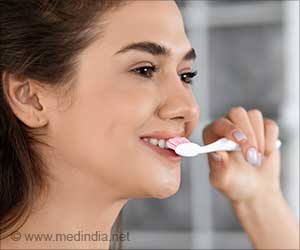However, today’s consensus is mostly based on studies published since the 1990s, which showed two minutes of brushing led to good (but not excellent)
.
Plaque is the sticky film formed on teeth when bacteria in the mouth mix with sugary or starchy foods. It can lead to tooth decay, gum disease, and tooth loss.
While brushing longer than two minutes is shown to remove more plaque, there’s still a lack of research that has looked at whether more than two minutes of brushing is associated with better long-term oral health compared with two minutes.
Importance of Brushing
Knowing the harms of plaque overgrowth, it is likely that removing more of it during brushing each time is linked to better oral health.
The main aim of brushing is to remove the accumulated bacteria, fungi, and viruses that live together in a community known as a microbial biofilm present in sticky plaque from tooth surfaces.
These microbes can grow easily because of rough areas on the tooth’s surface (such as from some fillings), certain areas are unable to reach with a toothbrush (like the spaces between teeth), or having braces.
Plaque biofilms re-grow on our teeth within hours of brushing that is why we are advised to brush twice a day.
Improper brushing for a long time can lead to higher levels of plaque, which may ultimately lead to bleeding gums, bad breath, and tooth decay.
Proper Brushing Technique
Current evidence suggests that spending up to four minutes each time on brushing can lead to cleaner teeth. This longer brushing time means more effective cleaning and getting those hard-to-reach places.
At the same time, we should be careful not to brush too often (such as more than two times a day) and avoid brushing hard or using abrasive toothpaste and hard bristle toothbrushes, as this can also cause damage to teeth and gums.
One of the most recommended brushing techniques is the modified bass technique, which is intended to clean at and below the gum line by placing the toothbrush at a 45-degree angle to the gum line. The gum line is the area where plaque is formed first and is most likely to cause inflammation.
Then start brushing with a gentle force in circular motions. Gentle brushing is preferred so that we don’t damage the hard and soft tissues present in the mouth.
Many factors can affect which type of technique, brush, and toothpaste to use. In the case of people who may have damaged teeth surface from drinking too many acidic fizzy drinks can avoid abrasive toothpaste and harder bristles.
Always consult a dentist to know what type of brushing technique, brush, and toothpaste to use.
Interdental Cleaning
Apart from brushing, interdental cleaning using flossing and interdental brushes are required foreffective plaque removal in brushing inaccessible tooth areas. Studies have also found that both tooth decay and gum disease can be reduced by flossing.
The most effective way of flossing is sliding the floss between the gums and tooth and holding it firmly against the tooth and rubbing along the surface of the tooth in a gentle up and down motion, gently advancing the floss beneath the gum line.
Interdental brushes, which can be pushed between the teeth at the gum level, can be even more effective. Less is known about how effective the other cleaning aids such as toothpicks, water jets, and tongue cleaners can be.
Other Ways to Reduce Dental Plaque:
- Chew sugarless gum.
- Choose healthy foods and cut back on sugary, starchy foods and drinks.
- Get dental check-ups at least twice a year.
- Rinse with an over-the-counter or prescription antiseptic mouthwash.
Everyone has mouth bacteria that cause plaque. With proper oral hygiene, we can remove plaque and prevent serious dental problems.
References:
- Dental Plaque
– (https://my.clevelandclinic.org/health/diseases/10953-plaque) - Ng E, Lim LP. An Overview of Different Interdental Cleaning Aids and Their Effectiveness. Dentistry Journal. 2019; 7(2):56. – (https://www.mdpi.com/2304-6767/7/2/56)
- Wainwright, J., Sheiham, A. An analysis of methods of toothbrushing recommended by dental associations, toothpaste and toothbrush companies and in dental texts. Br Dent J 217, E5 (2014). – (https://doi.org/10.1038/sj.bdj.2014.651)
Source: Medindia



